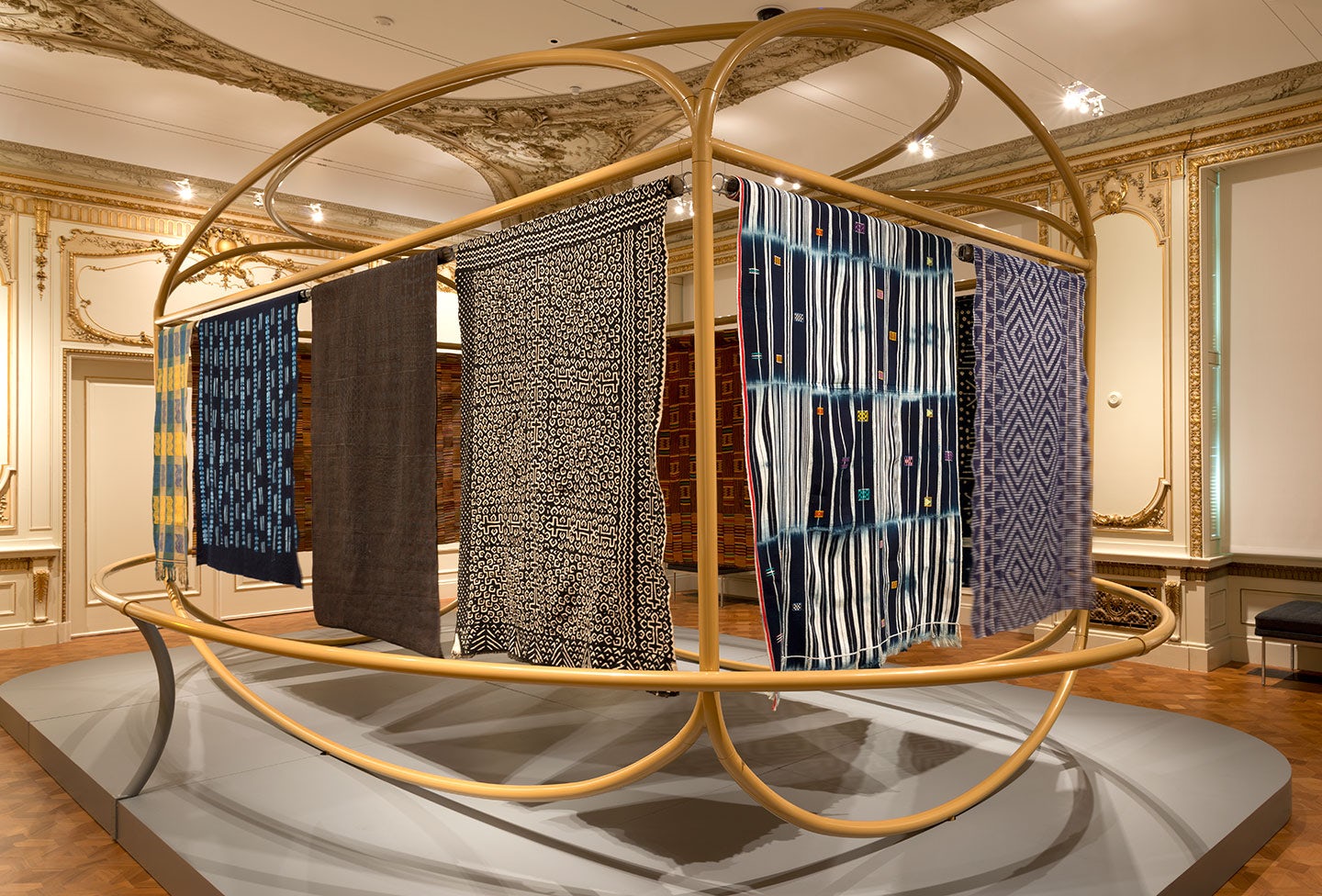In a recent exhibition at the Cooper Hewitt, Smithsonian Design Museum, a series of vibrant African textiles hung like tapestries from an intriguing custom-built structure surrounded by a display of woven African hats. The special installation was the curatorial vision of architect David Adjaye for the program “David Adjaye Selects,” which closed this weekend. (Incidentally, Adjaye also designed the display system specifically for this show.)

Born in Tanzania and raised by Ghanian parents, the London-based architect and designer cited textile design as a fundamental influence in his projects. Their geometries and abstractions figure prominently in such buildings as his Moscow School of Management SKOLKOVO and the National Museum of African American History, the latter of which is a much-anticipated project scheduled for completion this year.

Adjaye’s exhibition was the result of 11 years spent traversing the African continent, visiting nearly every capital city and learning each region’s distinct culture and history. In Africa, textiles are everywhere: wrapped around children, hung up in homes and sold on streets. The architect sees these objects as “social agents” that have the power to bring people together and communicate a sense of place.
Each textile is loaded with memory: Adjaye himself remembers being wrapped in a pattern during his childhood and, now, exercises the same practice with his son. “Inherent in their production and design,” he wrote for the exhibition’s brochure, “is narrative about culture that I consider absolutely critical to the practice of architecture.”

Like many progressive architects, Adjaye believes the built environment should be responsive to the unique geography and culture of its surroundings. “In our current globalized world, architecture can often feel imposed, offering a spectacle of modernity rather than specific and contextualized paths into the future,” stated Adjaye. “This is of particular concern in Africa, where we are only very recently coming to understand the continent’s distinct expression of modernity.” Adjaye is less concerned with building something that feels new than with creating a structure that feels relevant to the present. Great design doesn’t mimic the past, but it does consider its influence.
Textile design, with its fractal geometries and mesmerizing patterns, is also inspirational to Adjaye in the formal sense. How textiles use color, repetition and scale to play with a viewer’s perception and create illusions of depth has influenced many of his façades: look no further than Rivington Place in London, the Francis A. Gregory Library in Washington, DC, or the Sugar Hill Housing complex in New York City. His chair design for Knoll, too, incorporates patterns borrowed from African textiles.

The Cooper Hewitt thus drew a fascinating connection between the curator’s research process and the architect’s design process. Both curators and architects act as mediators of history, making creative decisions about what should be kept and what should be altered. Both roles must address deep histories without dismissing them as static. It is Adjaye’s engagement with complex historical narratives that makes his architectural projects and, now, his curatorial work so powerful to behold.




